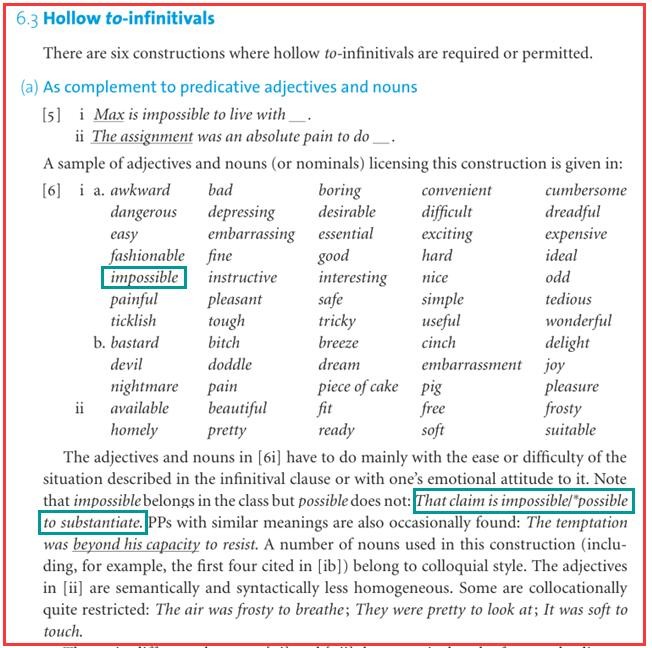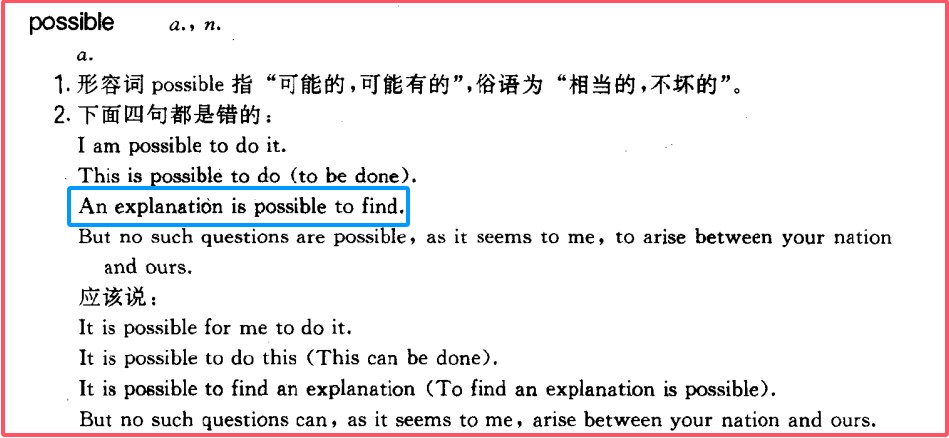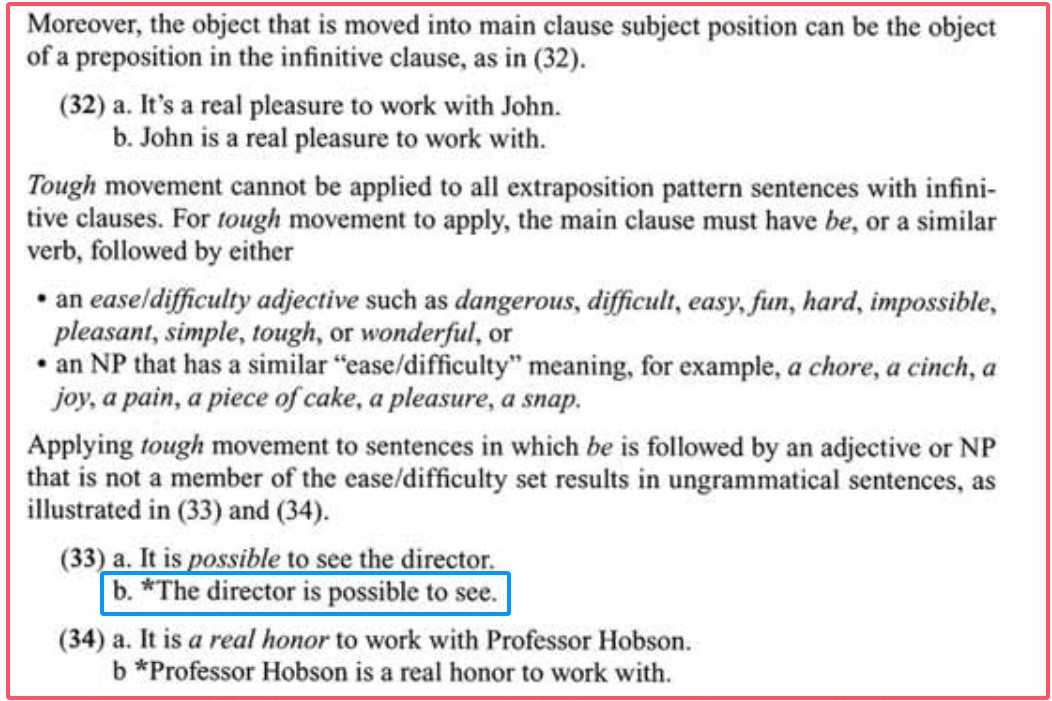4 辞书质疑(31):质疑《高级英语惯用法精华》possible后接反射不定式的用法
刘学明教授编著的《高级英语惯用法精华》(The Essence of Advanced English Usage)的第64-65页有如下论述:英语中某些形容词后接的作状语用的反射不定式习惯用主动形式表示被动意义。常用的这类形容词有 difficult(困难的),easy(容易的),important (重要的),impossible(不可能的),possible(可能的),long(长的),short (短的),high(高的)等。例如:
(1)The problem is difficult to solve.
(2)The short poem is easy to recite.
(3)The traffic rules are very important to observe.
(4)The agreement is impossible to reach.
(5)The treaty is possible to sign.
(6)The text is too long to recite.
我记得在某些惯用法书说过,形容词 possible 后面通常是不接反射不定式的。想听听专家老师的分析。谢谢!
最佳答案 2025-01-31 23:58
possible后面接用作外置主语的不定式是可以的。如:
It’s possible to break with old habits. 改掉老习惯是可能的。
It is possible to exist on bread and water. 靠面包和水也可能存活。
It is possible to complete the project in 5 days. 五天内完成此工程是可能的。
It is possible to be drowned in a few inches of water. 仅仅几英寸的水也可能致人溺死。
但是,possible后面接所谓的反射不定式通常认为是不可以的,尽管它的反义词 impossible 后面可以接反射不定式。如:
Your writing is impossible to read. 你的书法没法认。
His theory is impossible to understand. 他的理论人们不可能理解。
The cost of the flood damage is impossible to quantify. 这次水灾的损失是无可估量的。
The extremity of her grief is impossible to imagine. 她的极度痛苦是他人难以想象的。
关于哪些情况下可以使用反射不定式,赫德尔森的《剑桥英语语法》有比较详细的归纳,下面是部分截图(更多内容见该书的p1246及后面几页):

如果觉得我的回答对您有用,请随意打赏。你的支持将鼓励我继续创作!

- 3 关注
- 2 收藏,1153 浏览
- 易志天 提出于 2024-06-16 21:37
相似问题
-
 《高考英语备考1号·速效编》
《高考英语备考1号·速效编》
-
 《高考英语备考1号·写作编》
《高考英语备考1号·写作编》
-
 《高中英语晨读晚记》
《高中英语晨读晚记》
-
 《高中英语错题笔记》
《高中英语错题笔记》
-
 《零起点考大学英语》
《零起点考大学英语》
-


